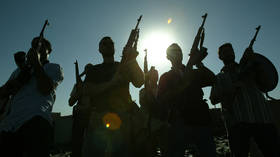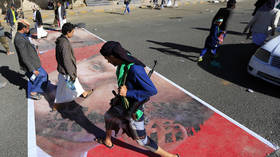How Yemen’s Cold War-era revolution set the stage for today’s devastating Western-backed war

September 26, 1962 is not only one of the most important dates in the history of Yemen, but also of modern Middle Eastern affairs, representing the beginning of what was a civil war to some and an international proxy conflict to others.
With the massive death and destruction wrought on Yemen today, this little-discussed period of Cold War history can tell us a lot about the contemporary Middle East.
Setup of a bloody conflict
Today, Yemen is primarily known as home to the world’s worst humanitarian crisis, having suffered the loss of almost 400,000 people since the beginning of the nation’s latest war in 2015. However, in the spheres of global trade and big business, it represents a geographical location that can be exploited for international shipping and its largely untouched oil and gas reserves. The leadership in Yemen has always been of great importance, especially in the period of the Cold War, during which Western imperialist nations and their reactionary allies on the Arabian Peninsula feared the prospect of any peoples becoming allies with the Soviet Union.
To understand North Yemen’s revolution of 1962, which later morphed into a brutal civil/proxy war until 1970, we first must understand the divided nations which would later join together and become a united Yemen in 1990.
Yemen, meaning ‘south Arabia’ in Arabic, has historically been a geographically and culturally perspicuous territory. The uppermost region of Yemen, formerly controlled by the Ottoman Empire, gained its official independence in 1918, calling itself the Mutawakkilite Kingdom of Yemen. The kingdom, which was known retrospectively as North Yemen, was controlled by a monarch, Imam Yahya Mohammed, who hailed from the Zaydi-Shia Islamic sect.
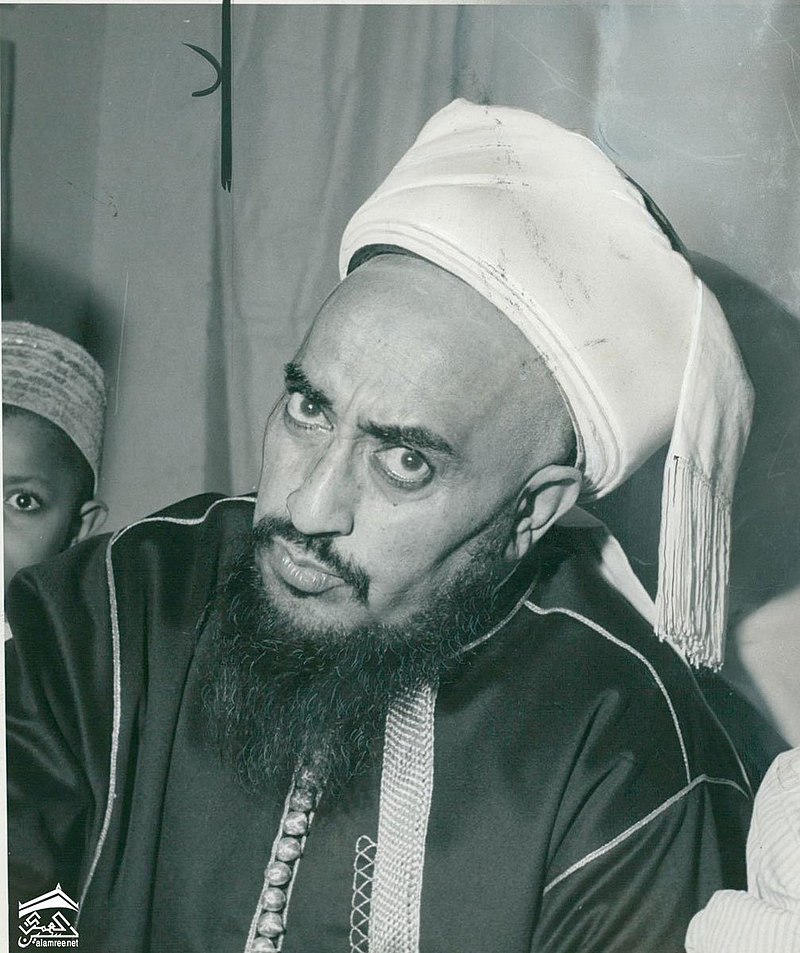
Meanwhile, the south and east of Yemen lay under the control of the British Empire. Declared the ‘Aden Colony’ in 1937, the southernmost territory in Yemen was developed around the key port city of Aden, strategically located where the Red Sea meets the Arabian Sea. Aden was first conquered by the British East India Company in 1839 and they ruled their colony with an iron fist.
The North Yemeni revolution erupted on September 26, 1962, when a commander of Yemen’s Royal Guard, Abdullah al-Sallal, led a number of Egyptian and Iraqi-trained officers in a popular coup d'etat to overthrow Yemen’s monarchical leadership. Al-Sallal was inspired by Egyptian President Gamal Abdel Nasser, who was the leading voice for Arab nationalism at the time. Al-Sallal’s army of revolutionary republicans deposed the newly crowned ruler, Mohammed al-Badr, quickly seizing Yemen’s capital city, Sanaa, declaring the newly formed Yemen Arab Republic (YAR).
At the time of the revolution in the north, the British governing the colony of Aden began to fear what this could mean for their then-top-secret plan to create the ‘Federation of South Arabia’, which they would later form in 1963. The British also feared the security threat such a revolution could pose to its allied regimes in the Persian Gulf, like Bahrain and Oman, where they sought after oil and the stability of the autocratic leaderships they had helped to place in power. The British could not allow an ally of Nasser, who was aligned with the Soviet Union, to become prosperous and spread the ideology of Arab nationalism even further on the Arabian Peninsula.
Following the assassination of the Crown Prince of North Yemen, Imam Yahya Mohammed, in 1948, came the consequential era of his son, Imam Ahmed bin Yahya. Imam Ahmed, as he is often referred to, aspired to rule over a ‘Greater Yemen’, and his forces clashed on several occasions with the British to the south. In March 1955, Imam Ahmad survived a coup attempt and faced mounting pressure against his autocratic rule. He eventually decided in 1958 to join what became the United Arab States, a confederation with what is now Egypt and Syria, known at the time as the United Arab Republic (UAR).
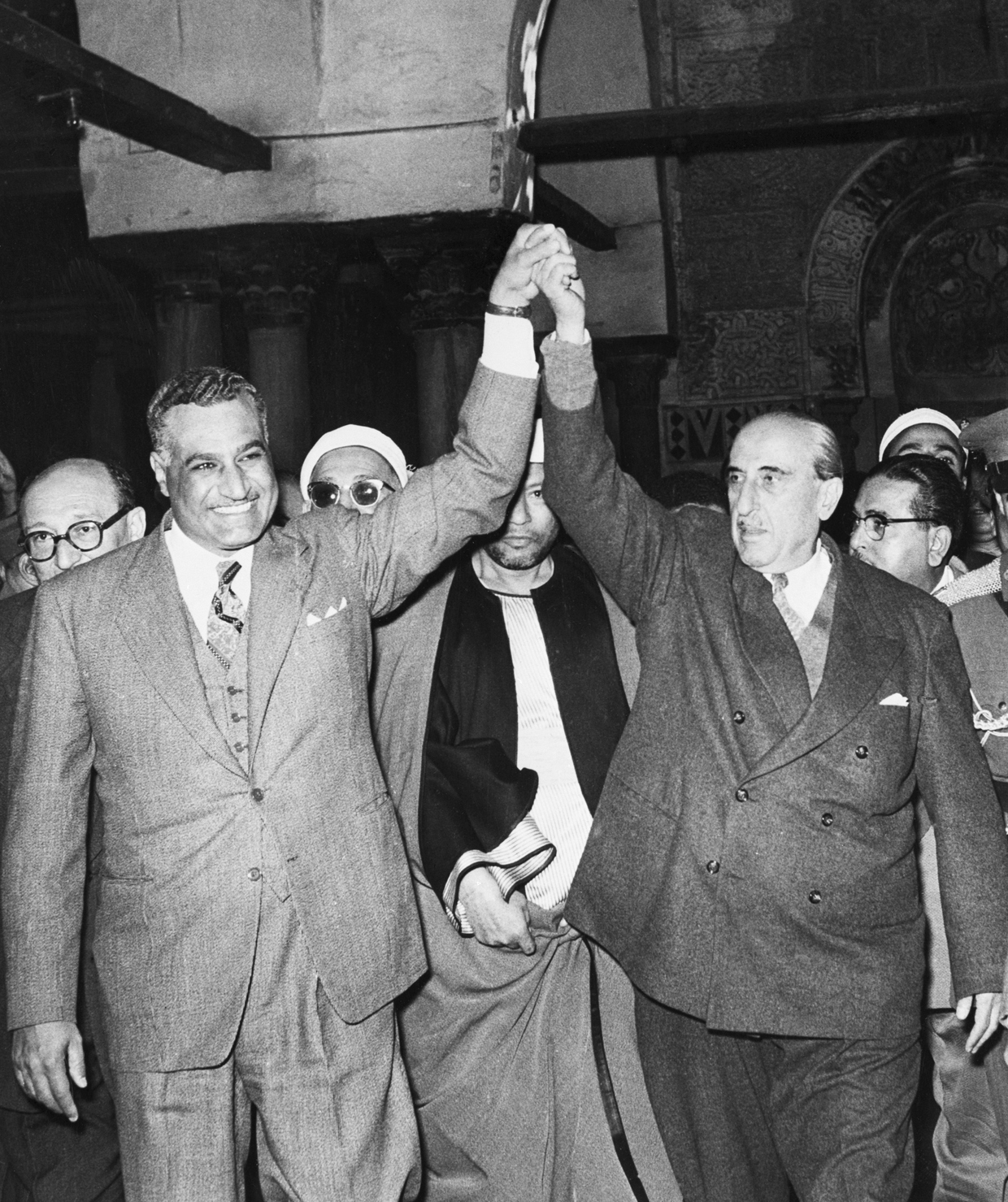
The UAR, which had unified Syria and Egypt, quickly crumbled, and by 1961, Yemen had officially withdrawn from the confederation. It has been argued that the confederation’s breakup was a significant factor in paving the way for the 1962 civil war, as it then gave way to al-Sallal’s republicanism, which would become popular in North Yemen. The former King of Yemen, Imam Mohammed al-Badr, did not decide to cede power to his republican opponents without a fight – fleeing to Saudi Arabia and from there rallying an army of royalists that were equipped and supplied by Riyadh.
Yemen’s revolution
I asked Rune Agerhus, the chief coordinator at the Organization of Solidarity with the Yemeni Struggle (OSYS), how the Mutawakkilite Kingdom’s leadership was able to suddenly change and ally itself with Saudi Arabia, after formerly being an ally of Nasser.
He stated: “Up until recently, to rule Yemen meant to balance yourself on the precipice of internal and external contradictions. Yemen has always prided itself on the fact that it had remained an independent kingdom for more than a thousand years up until 1962, with a long anti-colonial history against both the Roman and Ottoman empires. Despite economic and political cooperation between the Soviet Union and the Mutawakkilite Kingdom going as far back as the 1920s, the emerging multipolar world with two competing superpowers on each side meant Imam Al-Badr had to make some significant choices to remain seated in power.
“The clashes that the Kingdom of Yemen had with Saudi Arabia and British forces to the south were not born out of any anti-colonial sentiment, but rather from the feeling that these two countries held territory that the Imam believed was his.
“It all changed in 1962 when the very superstructures of the Mutawakkilite Kingdom and the Imam’s rule were threatened. There is also the very crucial point to be made that Yemen’s tribes have always been influenced by Saudi rule and decree, a malignant practice that has helped shape Yemen as the poorest Arab country on the planet. Saudi Arabia in turn likely promised to support Imam Al-Badr to maintain this tribal influence, and the Imam sought refuge in an unlikely ally to maintain power.”
Although the US did end up supplying anti-air weapons to the Kingdom of Saudi Arabia (KSA) in its fight against the republicans in Yemen, it fell short of playing the role, on the side of the KSA, that it does in today’s conflict against the Ansarallah government, which took over Sanaa in 2015. Instead, it was the British that played the most prominent role of any Western country, on the side of the Saudi-backed royalists. MI6, the British SAS special forces, and mercenaries were all used to fight the Arab-nationalist republican forces, led by al-Sallal, in Yemen. Israel and the Hashemite Kingdom of Jordan also played a prominent role in providing weapons, intelligence, and logistical support to the Saudi-backed royalists.
One of the primary reasons for the Saudi-led coalition’s backing of the royalists in the conflict was the direct involvement of Egypt on the side of the newly established Yemen Arab Republic. The USSR was the first nation to formally recognize the YAR, and Soviet Premier Nikita Khrushchev even wrote to the Yemeni Republican leader, al-Sallal, stating that “any act of aggression against Yemen will be considered an act of aggression against the Soviet Union.”

Nasser sought to challenge Saudi Arabia, encourage the spread of Arab nationalism, and drive the British out of Yemen in order to bring the Red Sea under Arab sovereignty.
Just how pivotal was the influence of external powers on the civil war? Agerhus says:
“Saudi Arabia is, by many, considered to have been Yemen’s sworn enemy ever since thousands of barefooted Yemeni pilgrims were murdered by clansmen led by Al-Saud [Saudi Arabia’s ruling family] in the Tanomah valley in 1922. This marked the starting point of the long feud between the two countries. After the establishment of the modern Kingdom of Saudi Arabia in the early 1930s, the Western economic bloc got itself a new ally in the region that it could trust to thwart the emergence of what was then considered ‘radical thought.’ The build-up of global and regional alliances was already taking shape prior to the revolution of 1962.
“The Cold War affected the North Yemen civil war because the competing polars had vastly different viewpoints on the rights of people to self-determination and fundamentally different perceptions of the very practice of colonialism and feudalism.
“Egyptian and Soviet support for Abdullah Al-Sallal's forces shaped the war to a large extent, which is evident even today as the prevailing superstructures of Yemeni society and the armed forces are and were modeled on Egyptian inspiration and armed with Soviet and Russian weaponry. I do believe the war would have been fought otherwise, but perhaps with different results without international support.”
In Yemen’s British-controlled south, 1962 was also the year that pan-Arab liberation movements began to grow in size and put up a fight against British colonial rule. In October 1963, a new revolution began in the south, or what the British would come to describe as the ‘Aden emergency,’ which involved revolutionary action from a unified front of Marxist and Arab nationalist forces from the Taiz and Aden areas. This revolution was aided by the YAR, as the leading revolutionary forces in British-occupied southern Yemen came together to form the unified ‘Front for the Liberation of Occupied South Yemen,’ which was set up under the supervision of their revolutionary comrades in Yemen’s north.

“I don’t believe there is any evidence to suggest that international assistance to the anti-colonial struggle was crucial in shaping the inevitable result,” Agerhus says. “However, the People’s Democratic Republic of Yemen, as an institution, likely would not have been established without Soviet political and advisory support.”
He went on to say that “the struggle in the south was centered on two competing but cooperating resistance factions, the Front for the Liberation of Occupied South Yemen, or FLOSY for short, and the National Liberation Front. FLOSY maintained a socialist Arab nationalist political line while the NLF ascribed to Marxist ideology.”
Consequences of the September 26 Revolution
Between 1962 and 1970, at least 200,000 people had been killed in a conflict which eventually led to the inevitable; the Yemen Arab Republic was recognized as a sovereign nation and the royalists, who lacked popular support, were defeated. However, while the republicans had won the war, in the process, so too had Arab nationalism died amid the fighting in Yemen.
It is often suggested that the downfall of Arab nationalism stemmed from the shocking defeat of Nasser’s Egypt during the June 1967 war, when Israel launched its offensive known as ‘Operation Focus’ and went on to defeat its Arab neighbors in only six days. However, without Egypt’s over-commitment to the war in Yemen, which had reached a deadly stalemate during the mid-1960s, Tel Aviv may not have possessed the confidence to have launched the Six-Day War, or at the very least Egypt would have been more prepared for the confrontation. The war in Yemen cost the Egyptians so dearly that it is often referred to as ‘Egypt’s Vietnam,’ a war in which Nasser’s army was so heavily bogged down that his home turf ended up occupied by Israel.
In 1967, as Nasser’s Arab nationalism was dealt a death blow, an alternative ideology emerged which the Arab world would harness to continue its fight against imperialist powers and autocratic Middle Eastern rulers. Marxist ideology, in its various forms, was the natural answer to fill the ideological void. Nowhere was this more pronounced than in Yemen; in November 1967, the Yemeni revolution in the nation’s south proved successful in forcing out the British colonialists and the revolutionary forces declared the sovereignty of South Yemen. The defeat of Egypt earlier that June had seen the Israelis seize the Sinai Peninsula, resulting in the closure of the Suez Canal supply route for the next eight years. The closure of this strategic supply route to Europe, combined with the pressure of the ongoing revolutionary war, forced the British to leave and, only two years later, after the liberation of South Yemen, the Arab world’s first communist state was declared in 1969, the People’s Democratic Republic of Yemen (PDRY).
“I do believe that the Cold War ended up having a positive effect on Yemen’s domestic political trends,” Agerhus said when asked about the era’s impact. He explained that “the majority of Yemen’s population are peasantry, and the country has a rich and diverse political landscape with left-leaning and Islamically progressive tendencies dominating the scene. The general population also remains vocally anti-colonialist in both tone, theory and practice, which is undoubtedly a relic that persists from the Cold War.”
Although the Cold War provided inspiration and an environment in which Yemenis would rise up against the tyranny of their British occupiers to the south and an autocratic regime to the north, with the decline of the Soviet Union, the lack of any solid counterbalance to Western hegemony doomed the nation. Initially, unification was thought to lead to a brighter future for Yemen as a whole, one under which the leaderships of both South and North Yemen could co-exist. However, the eventual unification of the PDRY (South Yemen) with the YAR (North Yemen), birthing the Republic of Yemen in 1990, only ended up landing the country back in the hands of an autocratic ruler, Ali Abdullah Saleh, who would advocate and implement neo-liberal economic policies that crippled the public sector, all to appease international monetary institutions.
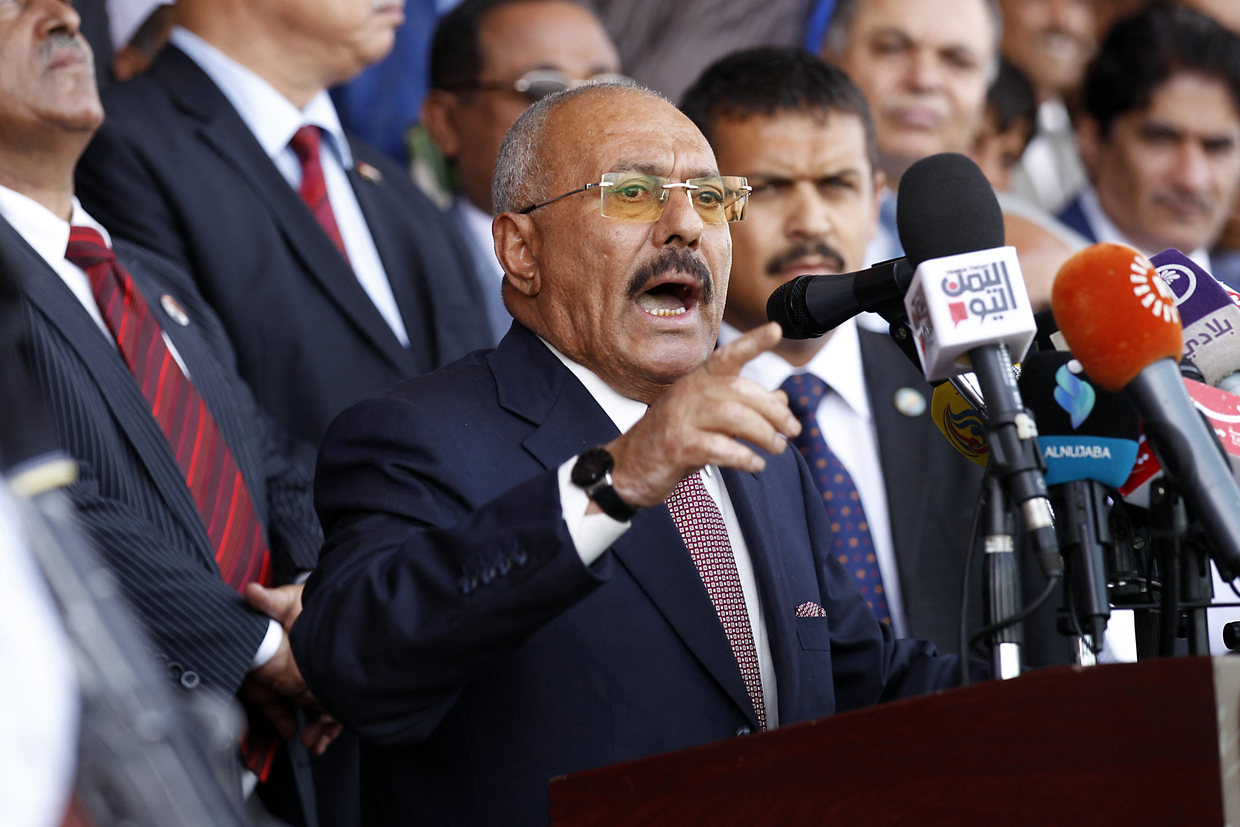
It has been speculated that, due to the loss of Soviet support for the PDRY and the weakness of both the economies of South and North Yemen, this was a primary factor in unification; however, when I asked Agerhus this question, he answered with the following:
“I don’t believe it was a significant factor, considering that unification was already under consideration by the late 1960s. Yemen was never meant to be separated. Representatives of South Yemeni trade unionists had seats in the government of North Yemen during the Civil War. A unified socialist state was always the penultimate goal, but ideological and geopolitical complications made the achievement of unification a prolonged and complicated matter. Yemen had earlier than 1990 been close to unification. In the 1970s, North Yemen was ruled by socialist military leader Ibrahim Al-Hamdi, who sought to improve and reshape society natively without any external intervention. Although an Arab nationalist by heart, he was still left-leaning enough to find large common ground with South Yemen’s president, Salim Rubai Ali, to such an extent that by 1977, a shared elementary school curriculum had been enacted to be taught in both Yemeni nation states, and with plans to reunify the two states’ diplomatic corps. A scheduled visit to Aden in 1977 would likely have further solidified the course towards actual reunification, but was forced to a halt with Al-Hamdi murdered during a luncheon by his right-hand man, Al-Ghashmi, on October 11, a murder many consider Saudi Arabia to have orchestrated in order to regain control of the tribes, whose influence Hamdi had made great effort to curb and limit.”
The Yemen we see today is a nation that was under the thumb of an autocratic ruler, Ali Abdullah Saleh, for 33 years, a country that’s direction was left in the hands of Western powers following the Cold War. On the results of 1962-1970 conflict, Agerhus says:
“The civil war and consequential atrophy of the public administration meant that Yemen was beyond vulnerable and even poorer than it had ever been. In theory, the September 26 revolution was a milestone achievement for Yemeni society, seeing the establishment of the Peninsula’s only Republic. In theory, the revolution would have established an Arab nationalist democratic state, but in practice, reality turned out to be different. Saudi Arabia maintained its influence on the tribes, and at one point even decided on the appointment of the country’s prime minister. This level of influence only grew stronger with Judge Al-Eriyani’s presidential term from 1967 until 1974, which saw the establishment of a special ministry of tribal affairs acting as a gateway for further Saudi entrenchment into Yemen’s public administration and society.”

